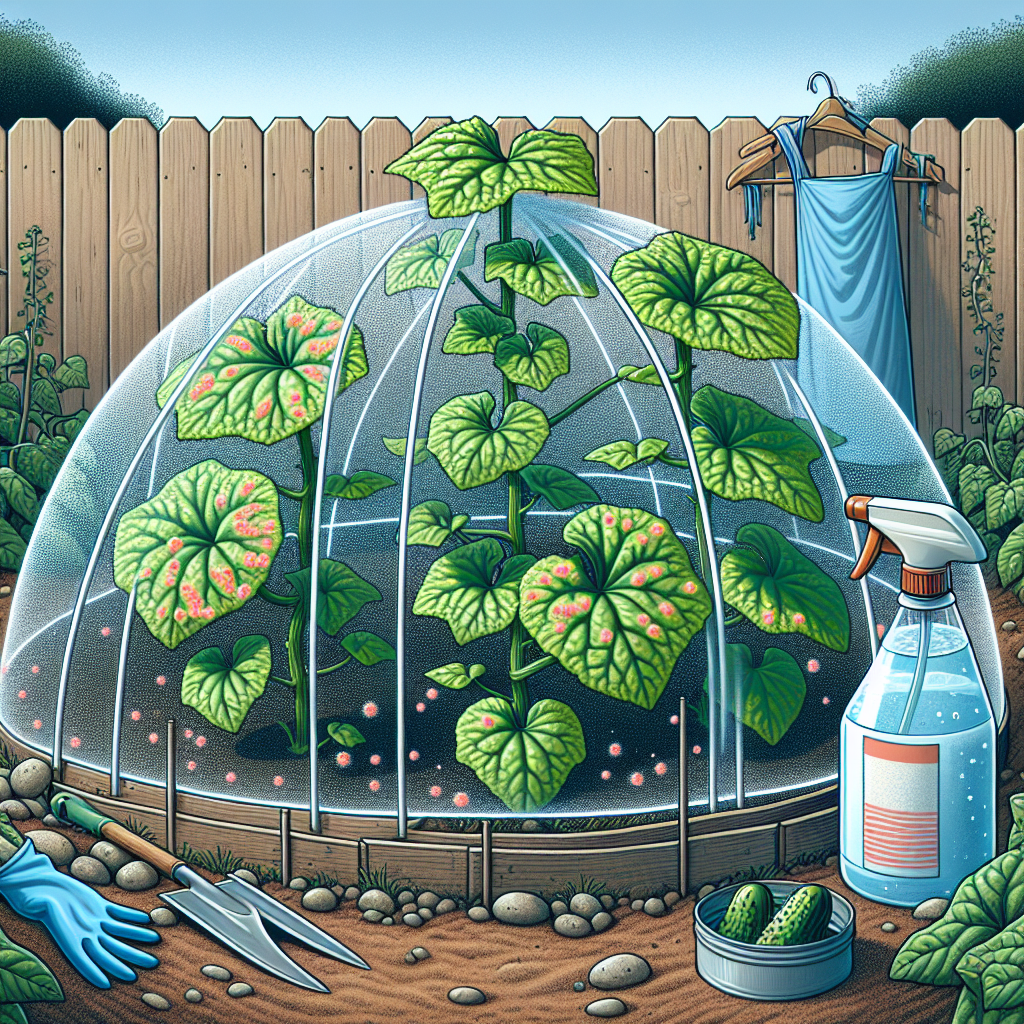Combatting Sooty Mold on Magnolia Trees
Updated June 18, 2024 at 1:59 am
Discover practical strategies for identifying and eradicating sooty mold on your cherished magnolia trees, ensuring their health and enhancing your garden’s beauty.

Understanding Sooty Mold on Magnolia Trees
If you're noticing a black and sticky substance on the leaves of your magnolia tree, you might be dealing with sooty mold. This mold is not a direct pathogen to the plant, but it can cause indirect damage by blocking sunlight necessary for photosynthesis.
- Pet Friendly: Typically non-toxic to pets, but the pests causing the mold may be harmful if ingested.
- Light Requirements: Magnolia trees thrive in full sun, which helps prevent sooty mold by inhibiting the growth of the fungus.
- Watering: Regular watering helps maintain healthy magnolias and fend off pests, indirectly reducing sooty mold risks.
- Humidity: High humidity can exacerbate pest issues leading to sooty mold, so adequate airflow is critical.
- Temperature: Magnolias are adaptable but follow specific care guidelines to prevent stress that may lead to pest infestations.
- Difficulty: Sooty mold is generally manageable with proper care and intervention.
What Causes Sooty Mold on Magnolia Trees?
Sooty mold is often the result of a pest infestation. Aphids, scale insects, and whiteflies excrete a sticky substance known as honeydew, which creates an ideal environment for sooty mold to develop. Keeping an eye out for these pests is a crucial step in mold prevention.
Identifying the Root of the Problem: Pest Infestations
Inspecting your magnolia tree regularly for signs of pests can save you a lot of trouble. Aphids are tiny, pear-shaped insects, while scale insects can be more challenging to spot, resembling small bumps on branches or leaves.
How Does Sooty Mold Affect Your Magnolia Tree?
While sooty mold does not directly damage the tree, it can weaken your magnolia by blocking essential sunlight from reaching the leaves. Over time, this can stress the tree and reduce its growth.
Prevention Strategies for Sooty Mold
Prevention involves keeping your magnolia healthy and free from stress. This includes proper watering, fertilizing, and pruning practices. For example, regular garden maintenance helps promote air circulation and sunlight penetration, which are key in keeping pests at bay.
Safe and Effective Pest Control Products
When it comes to dealing with pests that cause sooty mold, insecticidal soaps or neem oil can be beneficial. These products are safe for the environment and generally non-toxic to pets and humans.
Insecticidal Soaps
Insecticidal soaps are a popular choice for treating aphids and other pests on magnolia trees. For instance, Safer Brand Insect Killing Soap has been highly rated by gardeners for its efficacy. People have found it to work well against a variety of pests, without harming beneficial insects when used according to the label.
Pros
- Effective against soft-bodied insects
- Environmentally friendly
- Safe for beneficial insects when used correctly
Cons
- May require repeated applications for heavy infestations
- Certain sensitive plants may react negatively
Find This and More on Amazon
Neem Oil Treatments
Neem oil is another natural product that can combat pests leading to sooty mold. The Southern Ag Triple Action Neem Oil is a product with positive feedback for its effectiveness. Garden enthusiasts highlight its versatility not just as an insecticide, but also as a fungicide and miticide.
Pros
- Organic and biodegradable
- Can break the life cycle of pests
- Dual purpose as a fungal treatment
Cons
- Might be harmful to bees if not applied in the evening
- Can leave an oily residue if not properly diluted
DIY Solutions for Pest Control
Some gardeners opt for homemade solutions, like a diluted mixture of water and mild dish soap to treat pest infestations. These remedies are often less toxic and can be effective if applied consistently and early in the pest life cycle.
Pesticides: When to Use Them
Chemical pesticides should be a last resort, after trying safer alternatives. Products like Bonide Systemic Insect Control are used when infestations are severe. Although such products have strong anecdotal support for effectiveness, they should be used with caution, respecting all label warnings for the safety of the environment and non-target organisms.
Pros
- Strong and fast-acting against a broad spectrum of insects
- Systemic solutions offer longer-term protection
Cons
- May be harmful to beneficial insects including bees
- Should be used with caution due to toxicity
Find This and More on Amazon
Optimizing Magnolia Care for Mold Prevention
Caring for magnolia trees involves understanding their specific needs. Research such as the detailed guide found here on caring for snake plants provides insights into addressing plant health, which is relevant for preventing issues like sooty mold.
Nourishing Your Magnolia Tree
Fertilizing your magnolia tree appropriately promotes vigor and reduces susceptibility to pests. A balanced, slow-release fertilizer with micronutrients can support overall health and resilience against diseases and pests.
Effect of Improper Pruning on Pests and Mold
Incorrect pruning can harm the magnolia tree, leading to stress and increased vulnerability to pests. Ensure clean cuts and pruning at the right time of year to minimize impacts.
Watering Techniques to Prevent Mold
Over or under-watering can stress plants, leading to pest invasions. Adopting methods like drip irrigation ensures deep watering that reaches the roots without creating wet foliage that attracts pests.
Proactive Monitoring and Regular Maintenance
Consistent monitoring and maintenance are key in preventing sooty mold. This includes checking for pests, removing affected foliage promptly, and cleaning up leaf litter to reduce fungal spore spread.
Cleaning Sooty Mold from Magnolia Leaves
If sooty mold has already established itself, you'll need to clean the leaves to restore your magnolia's health. Mild soapy water can be used to gently wipe the mold off. Avoid harsh chemicals that can damage the foliage.
The Role of Landscape Design in Mold Prevention
Planning your garden with adequate space between plants, such as those found in pollinator-friendly vegetable gardens, ensures proper air circulation, reducing the risk of sooty mold.
The Bottom Line: Integrating Pest and Mold Management
Sooty mold is a sign of underlying issues, usually related to pests. Integrating plant care with pest management is the most effective strategy to combat and prevent sooty mold from affecting your magnolia trees.
Choosing the Right Soil and Mulch for Healthy Magnolia Trees
The right soil mix can significantly impact your magnolia tree's health. Well-draining soil is essential to prevent waterlogging, which can cause root rot and invite pests. Combining quality garden soil with organic mulch can help maintain moisture levels and reduce pest habitat.
Understanding the Effects of Weather on Mold Growth
Weather conditions play a significant role in sooty mold development. Wet seasons can encourage mold growth, while long, sunny days can help suppress it. Being mindful of your local weather patterns can guide your preventative strategies.
The Importance of Regular Tree Inspections
To keep sooty mold in check, regular inspections are vital. Looking closely at new growth and undersides of leaves can catch infestations early. Catching problems at this stage can mean simpler, more organic remedies, for example, like caring for peace lilies, can prevent the aggravation of conditions favoring sooty mold.
Companion Planting as a Natural Deterrent to Pests
Companion planting is another tactic you might find useful. Certain plants can deter pests naturally and thus prevent sooty mold indirectly. For example, planting marigolds around your magnolia can repel aphids due to their pungent smell.
The Benefits of Professional Arborists in Mold Management
Sometimes, the best course of action is to consult with a professional arborist. They have the expertise to identify and treat sooty mold and pest issues effectively and can provide specific advice to keep your magnolia tree healthy.
Building a Sooty Mold Management Plan
Consistency is key in preventing sooty mold. Having a management plan in place ensures you're regularly checking for pests, applying appropriate treatments, and nurturing your magnolia with good cultural practices.
Organic Versus Synthetic Fertilizers in Mold Prevention
Using organic fertilizers can contribute to the overall health of your magnolia tree and reduce the risk of sooty mold. They release nutrients slowly, unlike synthetic fertilizers, which can cause rapid growth that attracts pests.
Eco-Friendly Pest Management Techniques
Adopting eco-friendly pest management techniques, like introducing beneficial insects that feed on sooty mold-causing pests, is an excellent way to maintain balance in your garden environment.
Engaging Your Community in Combating Sooty Mold
Engaging with local gardening communities can provide additional resources and collective wisdom in combating sooty mold. Sharing experiences can help you gain new insights into effective prevention methods.
Long-Term Effects of Sooty Mold on Magnolia Trees
While sooty mold may look harmless, long-term effects include stunted growth and vulnerability to other diseases. Hence, it's wise to address the issue promptly and effectively.
Using Cultural Interventions to Suppress Sooty Mold
Cultural interventions, such as removing nearby plants that may harbor pests, can make your magnolia less attractive to insects that cause sooty mold. Strategic plant choices and positioning can reduce the need for chemical interventions.
How to Recognize and Treat Nutrient Deficiencies That Attract Pests
Magnolia trees with nutrient deficiencies are more susceptible to pests. Yellowing leaves might indicate a need for specific nutrients like iron. Correcting these deficiencies can bolster the tree's defenses against pests and mold.
Natural Predators of Pests: Friends of the Magnolia Tree
Encouraging natural predators like ladybugs and lacewings can offer an environmentally friendly solution to pest problems. These predators feast on the insects responsible for sooty mold, naturally maintaining a balance.
Teaching Others About Magnolia Tree Care and Mold Prevention
Sharing your knowledge about preventing sooty mold on magnolia trees can help others. Whether through community workshops or online forums, your experience can encourage sustainable gardening practices like those in winter vegetable gardening.
Reviving a Magnolia Tree Impacted by Sooty Mold
With timely action and proper care, a magnolia tree affected by sooty mold can often be revived. Treatment may involve removing infected parts, applying safe pest control measures, and providing ideal growing conditions to encourage recovery.
Evaluating the Effectiveness of Your Mold Management Strategy
Periodically assess the effectiveness of your mold management strategy. Adjust your plan as needed, based on observations and the magnolia tree's response to treatments, to maintain its health and beauty.
Recap and Takeaway Tips for a Healthy Magnolia
In summary, combatting sooty mold on magnolia trees involves prevention, treatment, and monitoring. By understanding the causes, nurturing your tree, and using safe control methods, you can maintain a beautiful and healthy magnolia.
Exploring Biological Controls to Prevent Sooty Mold
Biological controls can be a sustainable option for managing the pests that lead to sooty mold. Introducing beneficial nematodes into the soil or applying bacterial insecticides like Bacillus thuringiensis can target pest larvae without harming the magnolia tree.
The Significance of Regular Soil Testing
Conducting regular soil tests can provide insight into your magnolia’s health. It allows you to adjust your fertilization practices accurately and avoid creating a conducive environment for pests and mold.
Seasonal Care Considerations for Magnolia Trees
Adjusting your care routine as seasons change can help prevent sooty mold. For instance, magnolia trees may require different watering schedules or protection strategies during the colder months.
Debunking Myths About Sooty Mold
There are many misconceptions surrounding sooty mold, such as the belief that it’s a sign of a dying tree. Understanding the facts can help you deal with the problem effectively without unnecessary worry.
How to Balance Aesthetics and Health in Magnolia Care
Maintaining the beauty of your magnolia tree doesn’t have to come at the cost of its health. Appropriate pruning, spacing, and care will enhance both aesthetics and resistance to sooty mold.
Maximizing the Lifespan of Your Magnolia Through Mold Management
By addressing sooty mold and its underlying causes, you contribute to the longevity of your magnolia tree. A holistic approach to care will cater to its needs for years to come.
Conclusion: Fostering a Thriving Magnolia Free of Sooty Mold
To conclude, sooty mold on magnolia trees is a manageable issue when addressed with knowledge and care. Vigilance in pest control, appropriate cultural practices, and the use of eco-friendly products can keep your magnolias healthy and free from mold. Remember, it’s all about creating the best environment for your tree to thrive.
Shop more on Amazon
Flowers & Plants Team
Flowers & Plants Team


